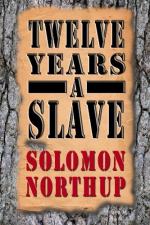
|
| Name: _________________________ | Period: ___________________ |
This test consists of 15 multiple choice questions and 5 short answer questions.
Multiple Choice Questions
1. What type of support did Bass contribute toward Solomon's quest for freedom?
(a) Letter writing, unjust, and illegal.
(b) Letter writing, research, and moral.
(c) Letter writing, intellectual, and legal.
(d) Letter writing, financial, and moral.
2. What was the nature of the meetings that Bass held with Solomon with regard to restoring his freedom?
(a) Open.
(b) Illegal.
(c) Typical.
(d) Secretive.
3. For the most part, why did whippings occur with high frequency at the Epps plantation?
(a) Because slaves did not pick the right amount of cotton.
(b) Because the slaves were constantly late to the cotton field.
(c) Because Epps constantly accused the slaves of stealing from him.
(d) Because the slaves tended to get rowdy.
4. Based on the description of one in Chapter 16, what was a slave driver supposed to do?
(a) He was supposed to make sure that the slaves would take breaks from their work.
(b) He was supposed to drive the slaves to places outside the plantation.
(c) He was supposed to drive the slaves from the auction house to the plantation.
(d) He was supposed to make sure that the slaves worked without stopping for breaks.
5. What inspired Solomon to design and build a fish trap?
(a) A desire to impress the other slaves.
(b) A never-ending appetite for fish.
(c) He had the necessary materials available; so he decided to put them to good use.
(d) A desire to expand his variety of food without much effort.
6. What type of sleeping accommodations did Epps provide for his slaves?
(a) A down-feather bed.
(b) A cot and a wool blanket.
(c) A wooden plank and a raggedy blanket.
(d) None. They would all sleep on the floor.
7. What did Solomon receive for Christmas, 1852?
(a) An extended vacation period from Epps.
(b) An update from Bass on the effort to free him from slavery.
(c) A fish trap that he had always wanted.
(d) An aluminum plate and a set of utensils.
8. How did people in the South make money at the time that Solomon was sold to Edwin Epps?
(a) By raising pigs.
(b) By catching possums.
(c) By turning in slave dealers.
(d) By catching runaway slaves.
9. Why was Eliza likely to have suggested to Solomon that he may be better off dead than dealing with Tibeats?
(a) Because she had overheard Tibeats say that he planned to kill Solomon.
(b) Because Eliza did not know that Solomon could handle Tibeats.
(c) Because Eliza thought that Solomon could not defend himself against Tibeats, Cook, and Ramsay.
(d) Because Eliza lived in misery and saw no way out for others or herself.
10. What did Bass view as a more effective means for getting help for Solomon to be freed from slavery?
(a) Getting Lawyer Henry B. Northrup to write a letter to the President of the United States.
(b) Traveling to Saratoga Sprngs himself.
(c) Traveling to Washington City to meet with the President of the United States to discuss Solomon's matter.
(d) Sending a letter to the President of the United States.
11. Toward which of the following did Patsey look forward to the most, to one day save her from the cruelty of her masters?
(a) Getting married.
(b) Running away.
(c) God.
(d) Rest.
12. What was the inspiration behind the name of the area that known as "Bayou Bœuf"?
(a) The bayou that ran through the area.
(b) Tame and untamed pigs.
(c) Tame and untamed cattle.
(d) A great statesman who lived in the area.
13. What was the main contributing factor that led toward the development of a friendship between Mrs. Ford and Solomon?
(a) William Ford suggesting to his wife that she be more pleasant toward Solomon.
(b) An act of kindness toward Solomon by Mrs. Ford.
(c) Mrs. Ford being lonely and Solomon being generous with the time that he spent talking to her.
(d) An act of kindness toward Mrs. Ford by Solomon.
14. Who was the slaves' best-loved plantation owner in Bayou Bœuf?
(a) Edwin Epps.
(b) William Ford.
(c) John Tibeats.
(d) Mary McCoy.
15. Why was Bass hesitant to write additional letters to try to get help for Solomon?
(a) Because he had already written a lot of them and had not received a reply from any of the recipients.
(b) Because he thought that the Postmaster in Marksville might become curious about his endeavor.
(c) Because he was not sure that the letters were not being delivered.
(d) Because he was not sure that they letter recipients could not read his writing.
Short Answer Questions
1. The approach toward Solomon by two individuals on the Epps Plantation signaled which of the following?
2. What was the likely thought type that raised the level of respect for Marshall among those who lived in Bayou Bœuf after he killed the man from Natchez?
3. After Bass agreed to help Solomon regain his freedom, how did both men act toward each other around Epps?
4. What did the fact that Epps bought a large plantation that the slaves had actually earned for him reveal about him?
5. What type of work did Mr. Eldret have Solomon handle for him?
|
This section contains 946 words (approx. 4 pages at 300 words per page) |

|




